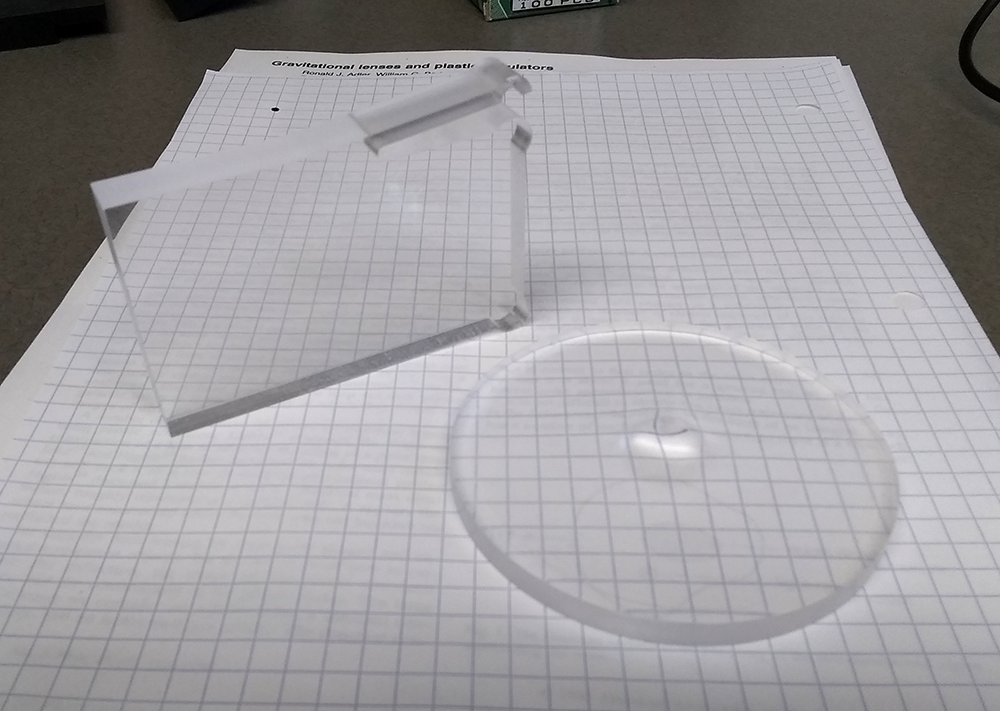
We work with a wide variety of materials in the shop, each of which has its strengths and limitations. One frequent visitor to the milling machine is cast acrylic, a clear, lightweight, machinable thermoplastic. It’s known under a variety of trade names, such as Plexiglas and Lucite, as well as polymethyl methacrylate (or PMMA).
Acrylic is often used as a replacement for glass, for its high light transmission (~92%), lower density, and higher impact strength. It is still brittle, and nowhere near as strong as polycarbonate, but won’t suffer from UV degradation and can be used outdoors. Acrylic mostly machines well, although requires extra care with thin sheets and work near edges, where even a small excess of force can cause fractures. We have been using it to replace fragile glass sheets throughout the department’s labs.
Careful sanding and polishing can produce optically clear pieces, so that researchers can observe the inner workings of an experimental setup. Acrylic is also available in a selection of fluorescent colors – red! blue! green! amber! – though, oddly enough, we have yet to receive a request for a fluorescent green vacuum chamber.
One of these days, someone will roll into the shop with a project that demands Bucknell-themed fluorescent blue-and-orange (amber), and we will be ready.
One last fun note: most materials have a distinctive smell when cut on power tools. When cutting or milling acrylic – especially on the bandsaw – the aroma is vaguely fruity, like a distant cousin of whatever chemicals make Froot Loops cereal taste like “froot.” When coming across an unmarked sample of clear plastic, sometimes its distinctive smell is enough to help identify.